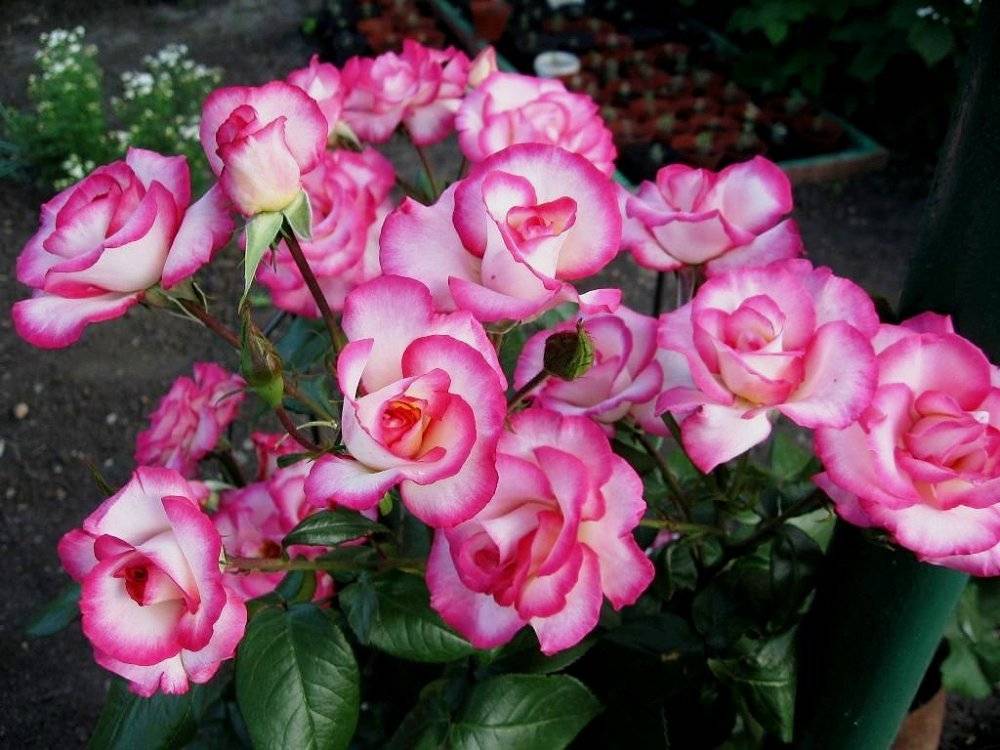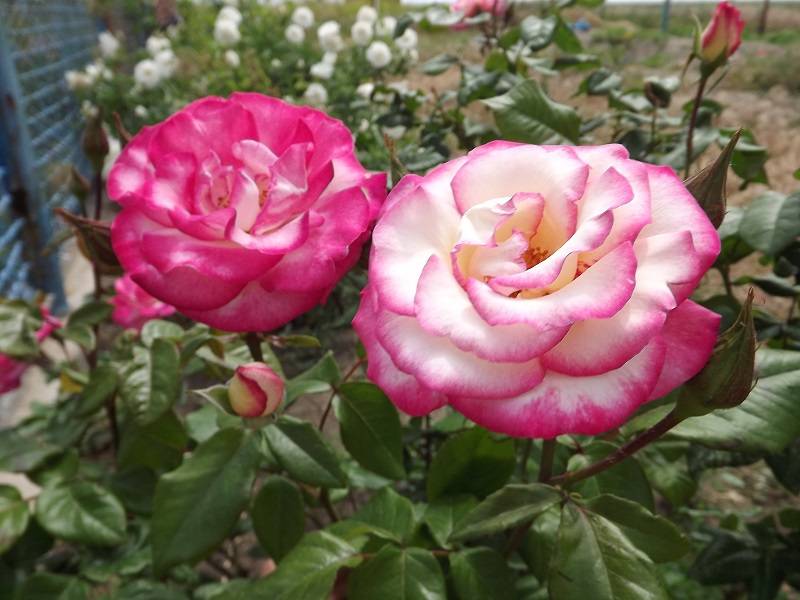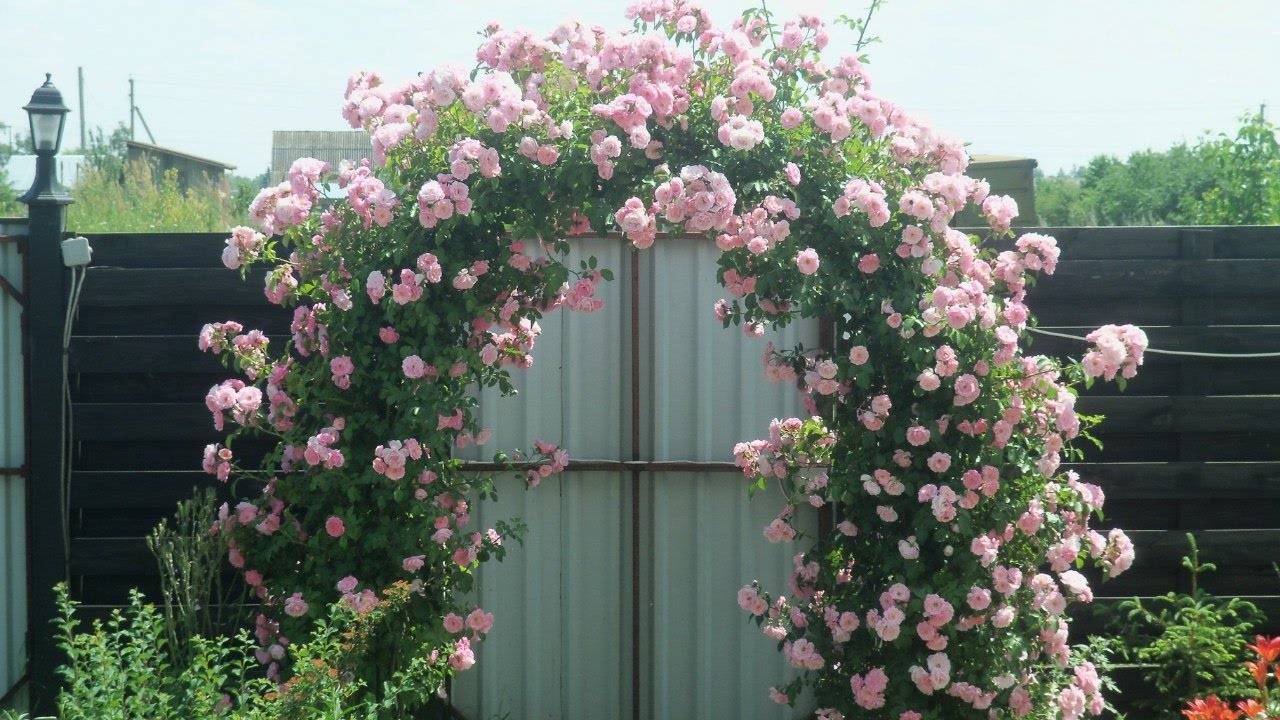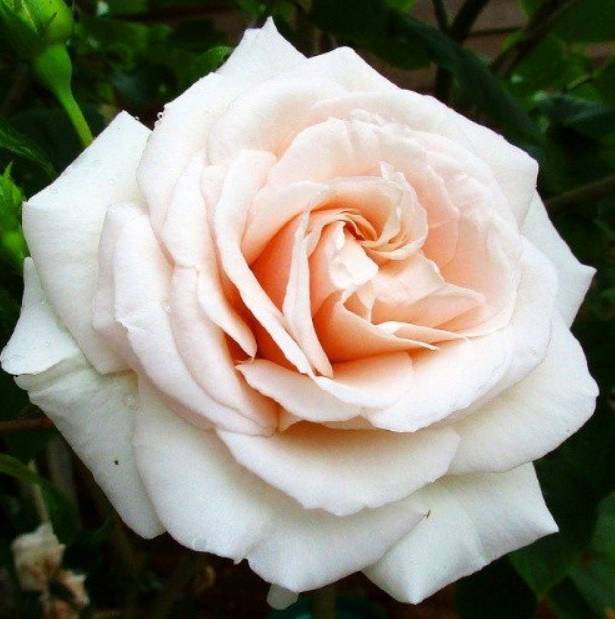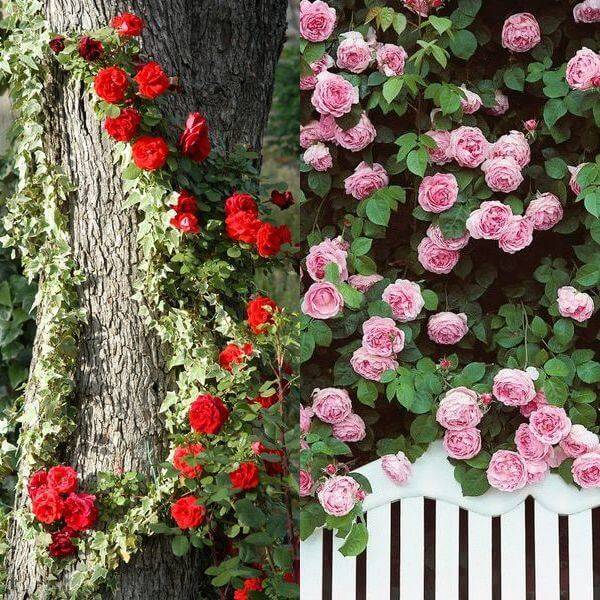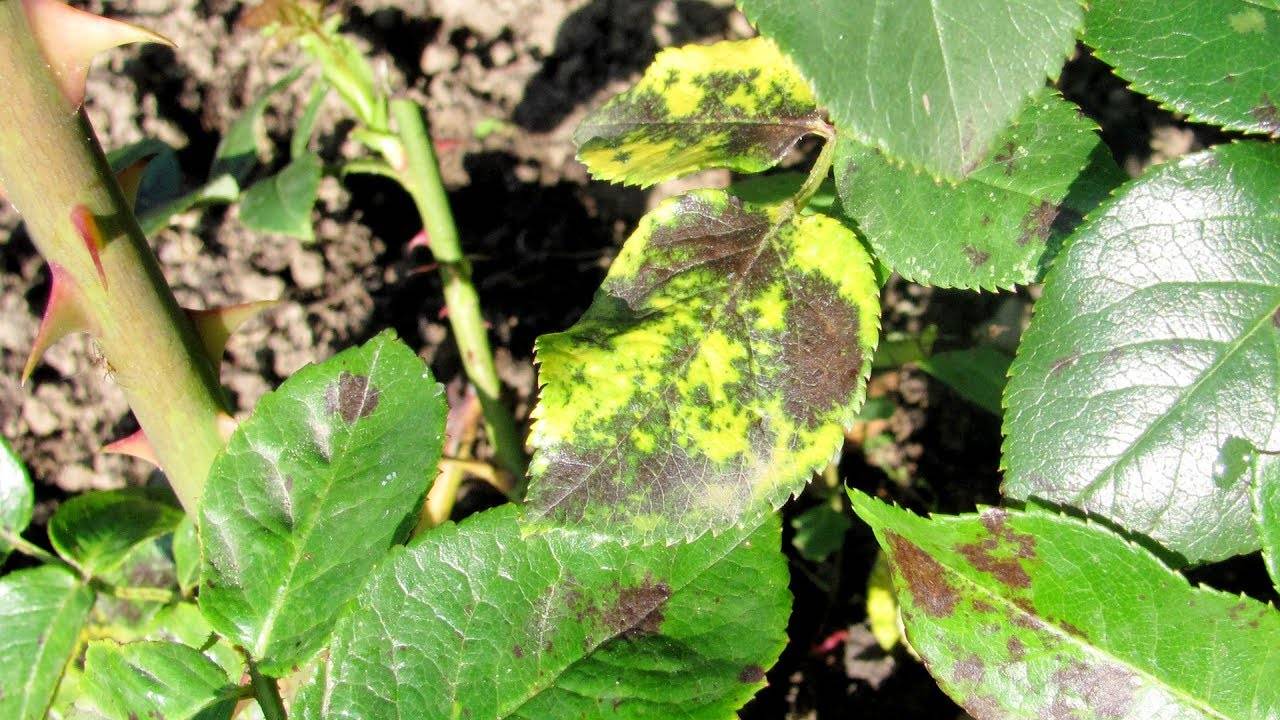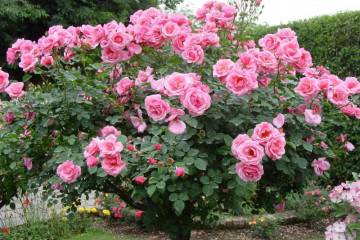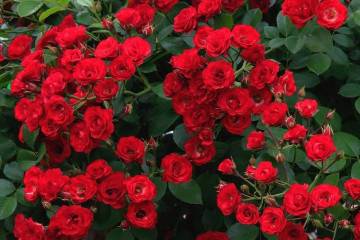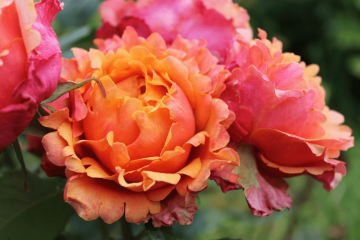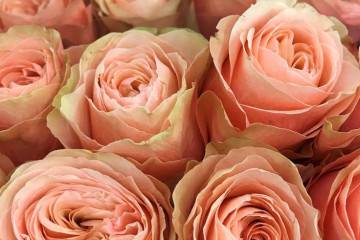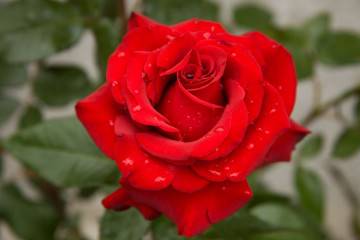Rose Handel (Handel) - features of planting and care
Climbing flowers are highly valued in landscape design - they decorate arches, hedges and gazebos. One of these types is the Hendel rose, the unpretentious nature of which is highly appreciated by experts. Buds with an unusual color attract attention and become a decoration of the infield.
Description
Rose Handel is a climbing rose variety bred in Ireland in the early 60s of the last century. It was named after the composer G.F.Handel and is known for its two-tone color. This distinctive feature sets it apart from climbing varieties.
Delicate pink buds, depending on the weather, change color:
- In the cold season, they whiten by 1-2 shades.
- In hot weather, they become richer, and the edges acquire a crimson hue and become more luxuriant.
Hendel buds are terry to the touch, have a goblet shape with a diameter of up to 10 cm.The edges of the petals are wavy, lush. The buds can form inflorescences or grow singly.
With good care, you can grow a bush 2-3 meters wide. The shoots are strong enough, and the leaves have a dark green tint - cut roses look spectacular. It makes sense to plant the Hendel variety if you want to have a large, spreading rose bush - the larger the buds, the more spectacular.
These roses will organically fit into the yard as a bright accent, so other plants should set off their beauty. At the same time on the bush there are buds in different stages of flowering - unblown, soft cream and already raspberry "cups". Therefore, they look beautiful, and not vulgarly bright - they are suitable for those who prefer the restrained elegance of design.
Handel tolerates dry cool weather very well, she is unpretentious to the surrounding factors. The only drawback of the variety can be called a weak aroma, but this fact is rather relative. Flowering occurs twice a year, repeated weaker is a characteristic feature of roses.
Correct fit
As noted above, the Handel rose is an unpretentious plant, but its cultivation has its own rules. First of all, it is necessary to carry out a successful planting so that the flower in the future will please with an abundant "head" of buds.
To do this, two factors should be considered:
- A place. The sun, draft and north wind will not work. Optimal conditions are morning sun, afternoon shade and light breeze.
- Time. Handel should be planted in early May, flower growers advise on the 8th. But if the seedling is bought in a greenhouse, you will have to wait until the leaves bloom on the trees. The soil temperature must be above 10 degrees, otherwise the bush will die.
A newly planted rose bush should not experience sudden changes in temperature, this will destroy its aboveground part. Heat and direct sunlight will leave burns on delicate petals - there will be no trace of the beauty of the buds. If the plant is planned to be planted next to some element (arch, wall of the house), you need to take into account the shadow from it.
Handel is planted with seedlings, the procedure is as follows:
- Prepare a hole 60-65 cm deep. If there are several bushes, the distance between them should be at least 1 meter. Put mineral fertilizer at the bottom of the pit.
- The seedling needs preparation before being placed in the ground: it is recommended to cut off the aboveground part and remove weak root shoots.To prevent rot, treat with a weak solution of potassium permanganate.
- Place the seedling in the hole, the roots should lie loose. Fill the gaps between them with soil. The root collar should be located 10 cm deeper, after which the soil is compacted and sprinkled with earth.
- Drizzle with lukewarm water.
If suddenly cold weather and a draft come, you can cover the seedling with garden film. At the same time, we must not forget about the fresh air for the plant - the film must be regularly lifted for airing.
Plant care
The soil for the Hendel rose should be light, heavy clay will not work - it will have to be mixed with sand. The best option is loamy soil, which absorbs water well.
Before the first flowering, you need to apply mineral fertilizing several times or use manure. In autumn, mineral fertilizers are needed, after winter - organic. Nutrient feeding is not needed during flowering.
Ornamental plants begin to tie up almost as soon as they have hardened. If a clear location of the bush is not planned (wrapping around an arch or other surface), it must be fixed with synthetic twine in a horizontal direction.
Wintering is an important stage in the life of the Hendel rose, you need to prepare the plant for it:
- Remove the ground part from the support.
- Cut off weak and damaged branches.
- Pour sawdust and dry leaves on the ground - a rose will be located on top.
- Tie the plant with synthetic twine and lay on the flooring.
- Cover with garden material, leaving an air gap.
Watering and its frequency depend on the type of soil: if there is groundwater, human intervention is needed to a lesser extent. Enough 1-2 times a week, but it is impossible to allow overflow.
Blooming rose
The Hendel bloom period is from July to October, the buds on the same bush are in different stages of opening. In cold weather, the flowers lose the brightness of the buds, and with warmth they turn crimson. During flowering, you do not need to fertilize the plant, only monitor watering, pests and light intensity.
If the rose does not bloom in the first year, you should not panic, this is a natural process of growth. Even if a lonely bud appears, it is better to pluck it - at this stage the bush should strengthen, and not waste energy on flowering.
If the buds did not appear in the second year or suddenly disappeared, the reasons may lie in the following factors:
- poor landing site - little sunlight, a lot of drafts;
- aging of the bush;
- pests;
- improper care - lack of feeding and shelter for the winter;
- overgrowth at the root is the result of poor root deepening.
You need to carefully examine the plant and analyze its care. Changing the latter can help identify the problem and correct errors.
Flower propagation
Reproduction of Handel is carried out by cuttings, the layering method is unreliable. To do this, you need to cut cuttings from the middle part of the stem - they must have at least 5 buds. In early July, with a pruner at an angle of 45 degrees, separate the cuts by cutting off the upper leaves and removing the lower ones.
Plant the processed cuttings in a pot with soil and cover with a jar. The storage area should be warm and well lit. You need to water and feed the cuttings several times a month. You can remove the jar with the appearance of the first leaves.
Diseases and pests
Rose Handel, like other varieties, is prone to black spot - it affects foliage. Processing with it is carried out with a solution of copper sulfate (3%). Preventive measures - do not leave foliage for the winter, do not use cut damaged shoots in compost, fertilize correctly.
The rose will be protected from pests by insecticide treatment and reasonable watering.
Rose Hendel is one of the most beautiful climbing rose varieties. Its amazing ability to change color, and its large wavy petals are eye-catching. In order for a rose bush to become a decoration of a site or garden, it must be properly planted and looked after at all stages of life.
